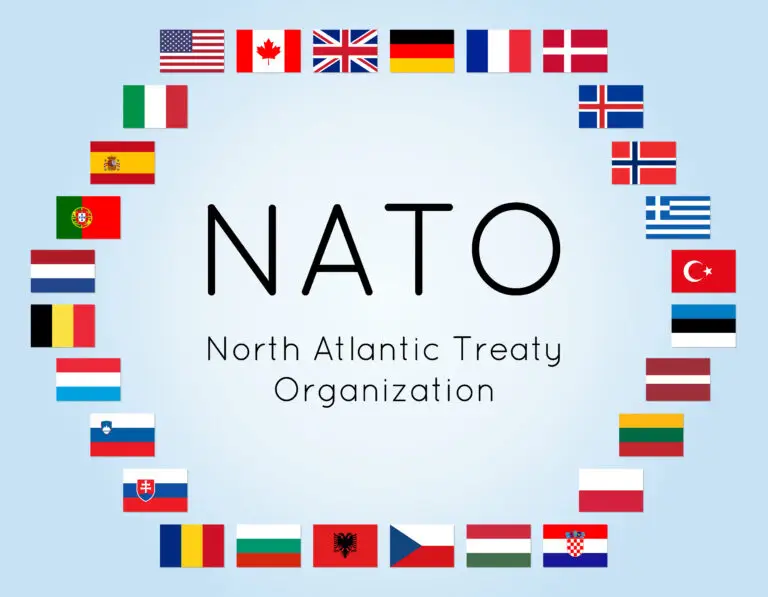NATO

Table of Contents
What is NATO?
NATO, the North Atlantic Treaty Organization, is an intergovernmental military alliance established in 1949. It comprises 30 member countries from North America and Europe who are committed to mutual defense and collective security.
NATO’s primary purpose is to provide a collective defense against external threats, particularly from the Soviet Union during the Cold War and more recently from terrorism and other security challenges. The alliance operates on the principle of collective defense, meaning that an attack against one member is considered an attack against all members, and all members are obligated to respond.
NATO also engages in crisis management, peacekeeping operations, and cooperative security efforts to promote stability and security in the Euro-Atlantic region and beyond.
History of NATO
NATO, or the North Atlantic Treaty Organization, is an intergovernmental military alliance established on April 4, 1949, aimed at collective defense and mutual security among member states.
The founding members of NATO included the United States, Canada, and several Western European countries, who signed the North Atlantic Treaty in Washington, D.C.
The primary purpose of NATO is to provide a collective defense mechanism, where an attack on one member state is considered an attack on all member states, invoking Article 5 of the NATO treaty.
Article 5 of the NATO treaty has only been invoked once in history, following the September 11, 2001, terrorist attacks on the United States, which led to NATO’s deployment of military forces in Afghanistan as part of the International Security Assistance Force (ISAF) mission.
NATO’s original mission was focused on countering the Soviet Union and the threat of communism during the Cold War, with the organization serving as a deterrent against aggression from the Eastern Bloc.
Following the end of the Cold War, NATO expanded its role to include crisis management, conflict prevention, and peacekeeping operations, participating in missions such as peacekeeping in the Balkans and humanitarian intervention in Kosovo.
NATO has expanded its membership since its founding, with the addition of new member states from Central and Eastern Europe, including former Warsaw Pact countries, as well as the inclusion of former Soviet republics like the Baltic states.
The NATO Summit is the organization’s highest decision-making body, where member states discuss and make decisions on matters of collective defense, strategy, and partnership.
NATO operates through various structures and bodies, including the North Atlantic Council (NAC), the Military Committee, and the International Staff, with headquarters located in Brussels, Belgium.
NATO continues to adapt to changing security threats and challenges, including terrorism, cyber warfare, and hybrid threats, while maintaining its commitment to collective defense, deterrence, and the promotion of democratic values and stability in the Euro-Atlantic area.
Related Links
American Revolution
Korean War
World War I
World War II